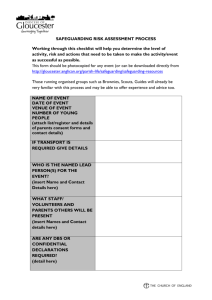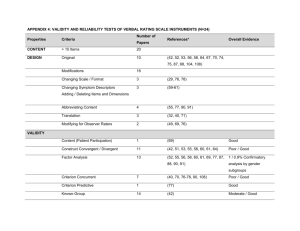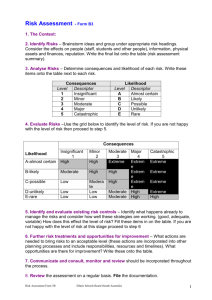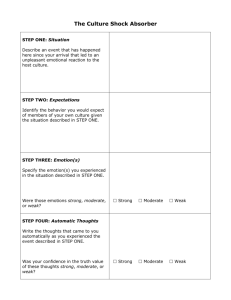Mid-term Exam
advertisement
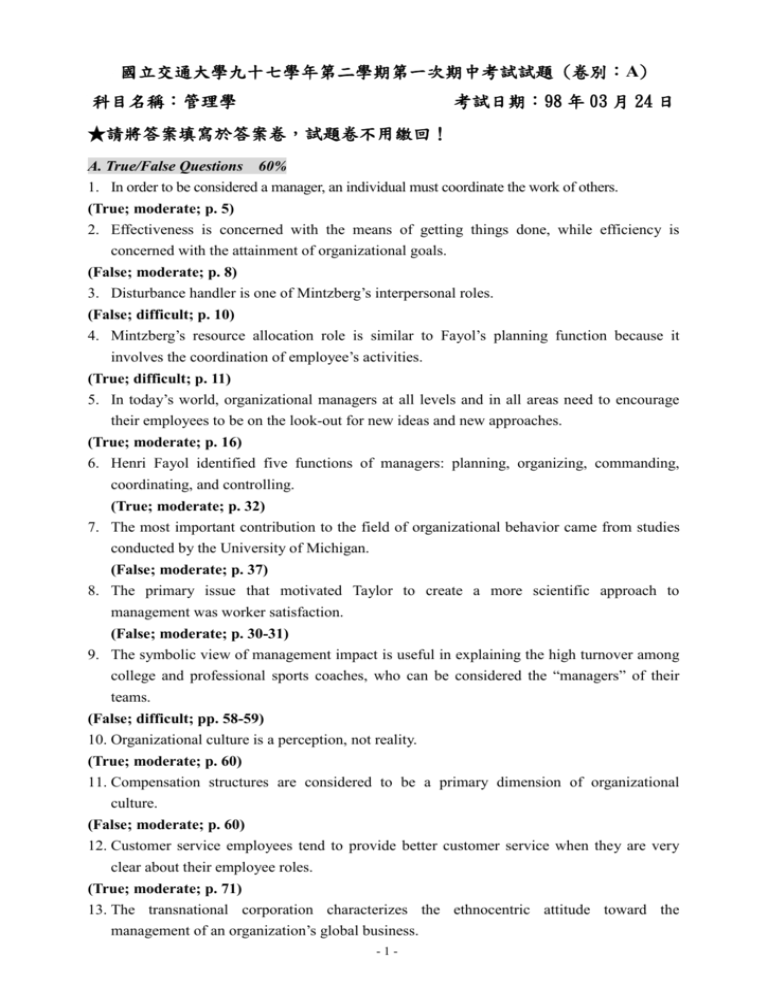
國立交通大學九十七學年第二學期第一次期中考試試題 (卷別:A) 科目名稱:管理學 考試日期:98 年 03 月 24 日 ★請將答案填寫於答案卷,試題卷不用繳回! A. True/False Questions 60% 1. In order to be considered a manager, an individual must coordinate the work of others. (True; moderate; p. 5) 2. Effectiveness is concerned with the means of getting things done, while efficiency is concerned with the attainment of organizational goals. (False; moderate; p. 8) 3. Disturbance handler is one of Mintzberg’s interpersonal roles. (False; difficult; p. 10) 4. Mintzberg’s resource allocation role is similar to Fayol’s planning function because it involves the coordination of employee’s activities. (True; difficult; p. 11) 5. In today’s world, organizational managers at all levels and in all areas need to encourage their employees to be on the look-out for new ideas and new approaches. (True; moderate; p. 16) 6. Henri Fayol identified five functions of managers: planning, organizing, commanding, coordinating, and controlling. (True; moderate; p. 32) 7. The most important contribution to the field of organizational behavior came from studies conducted by the University of Michigan. (False; moderate; p. 37) 8. The primary issue that motivated Taylor to create a more scientific approach to management was worker satisfaction. (False; moderate; p. 30-31) 9. The symbolic view of management impact is useful in explaining the high turnover among college and professional sports coaches, who can be considered the “managers” of their teams. (False; difficult; pp. 58-59) 10. Organizational culture is a perception, not reality. (True; moderate; p. 60) 11. Compensation structures are considered to be a primary dimension of organizational culture. (False; moderate; p. 60) 12. Customer service employees tend to provide better customer service when they are very clear about their employee roles. (True; moderate; p. 71) 13. The transnational corporation characterizes the ethnocentric attitude toward the management of an organization’s global business. -1- (False; difficult; p. 98; AACSB: Globalizations) 14. The process of exporting involves acquiring products made abroad and selling them domestically. (False; moderate; p. 99; AACSB: Globalizations) 15. Licensing is commonly used by both manufacturing and services organizations. (False; moderate; p. 99; AACSB: Globalizations) B. Multiple-Choice Questions 40% For each of the following choose the answer that most completely answers the question. 1. Today, the basic management functions are considered to be ______________. a. planning, coordinating, staffing, and directing b. planning, organizing, leading, and directing c. commanding, organizing, leading, and staffing d. planning, organizing, leading, and controlling (d; moderate; p. 9) 2. Which of the following is true concerning technical and managerial skills? a. Human skills and technical skills remain equally important as managers move to higher levels. b. Technical-skill needs remain necessary and human skills decrease as managers move to higher levels. c. Human skills remain necessary and technical-skill needs decrease as managers move to higher levels. d. Both human-skill and technical-skill needs decrease as managers move to higher levels. (c; difficult; p. 12) 3. General administrative theory focuses on ________________. a. the entire organization b. managers and administrators c. the measurement of organizational design relationships d. primarily the accounting function (a; easy; p. 32) 4. One outcome of the Hawthorne Studies could be described by which of the following statements? a. Social norms or group standards are the key determinants of individual work behavior. b. Money is more important than the group on individual productivity. c. Behavior and employee sentiments are inversely related. d. Security is relatively unimportant. (a; moderate; p. 37) -2- 5. Managers may be able to expand their areas of discretion by _______________. a. telling their employees what to do b. changing and influencing their organization’s culture and environment c. electing new government officials at the federal and state level d. changing employers and working for a different boss (b; moderate; p. 59) 6. Strong cultures _____________. a. are found in organizations with high employee turnover b. have a minimal influence on employee decision making c. can be found in all organizations that exist d. have a greater influence on employees than do weak cultures (d; moderate; pp. 61-62) 7. Which of the following most accurately reflects (準確地反映) the difference between strong cultures and weak cultures? a. Strong cultures tend to encourage employee innovation, while weak cultures do not. b. Weak cultures are found in most organizations, whereas strong cultures are relatively rare. c. Strong cultures have less of an influence on employee behavior than do weak cultures. d. Company values are more deeply held and widely shared in strong cultures than in weak cultures. (d; moderate; pp. 61-62) 8. Multidomestic corporations _________________. a. maintain operations in multiple counties, but do not allow managers in each country to make their own decisions b. utilize ethnocentric attitudes in financial decisions, but favor polycentric views in human resources issues c. utilize decentralization to make decisions in management in local countries d. follow the tastes, preferences, and values of the home country (c; moderate; p. 97; AACSB: Globalizations) 9. Which of the following is the basic difference between multidomestic corporations and global companies? a. Multidomestic corporations typically do business with more countries than global companies do. b. Multidomestic corporations are run by global companies but must be owned by a local, national company. c. Multidomestic corporations decentralize management to the local country, while global companies centralize management in the home country. d. Multidomestic corporations pay more in taxes than global companies do. -3- (c; difficult; pp. 97-98; AACSB: Globalizations) 10. Based on his scientific management principles, Taylor suggested which of the following pay principles? a. monthly salary b. monthly salary with bonus c. seniority pay d. incentive pay (d; difficult; p. 31) -4-


